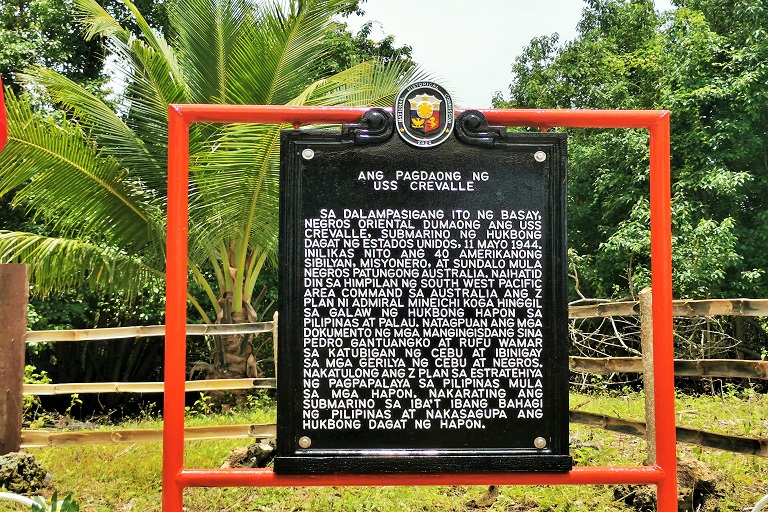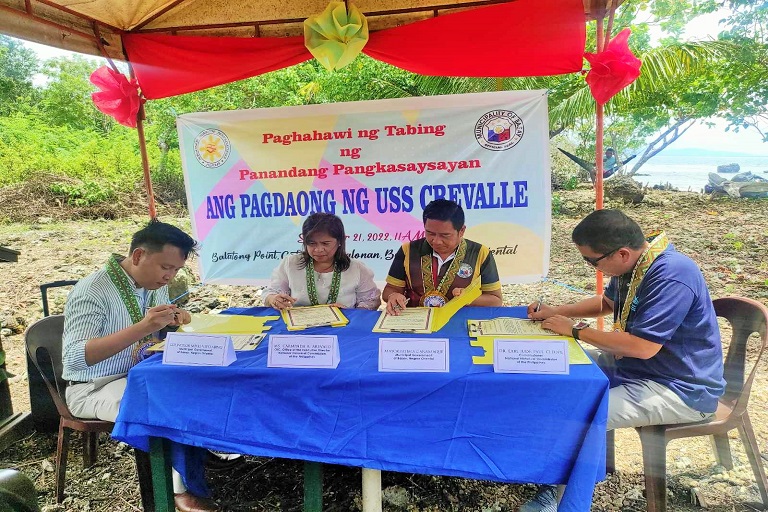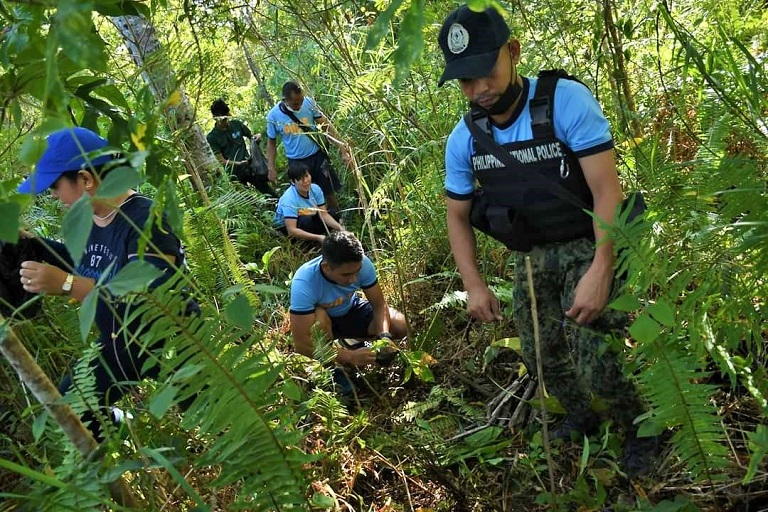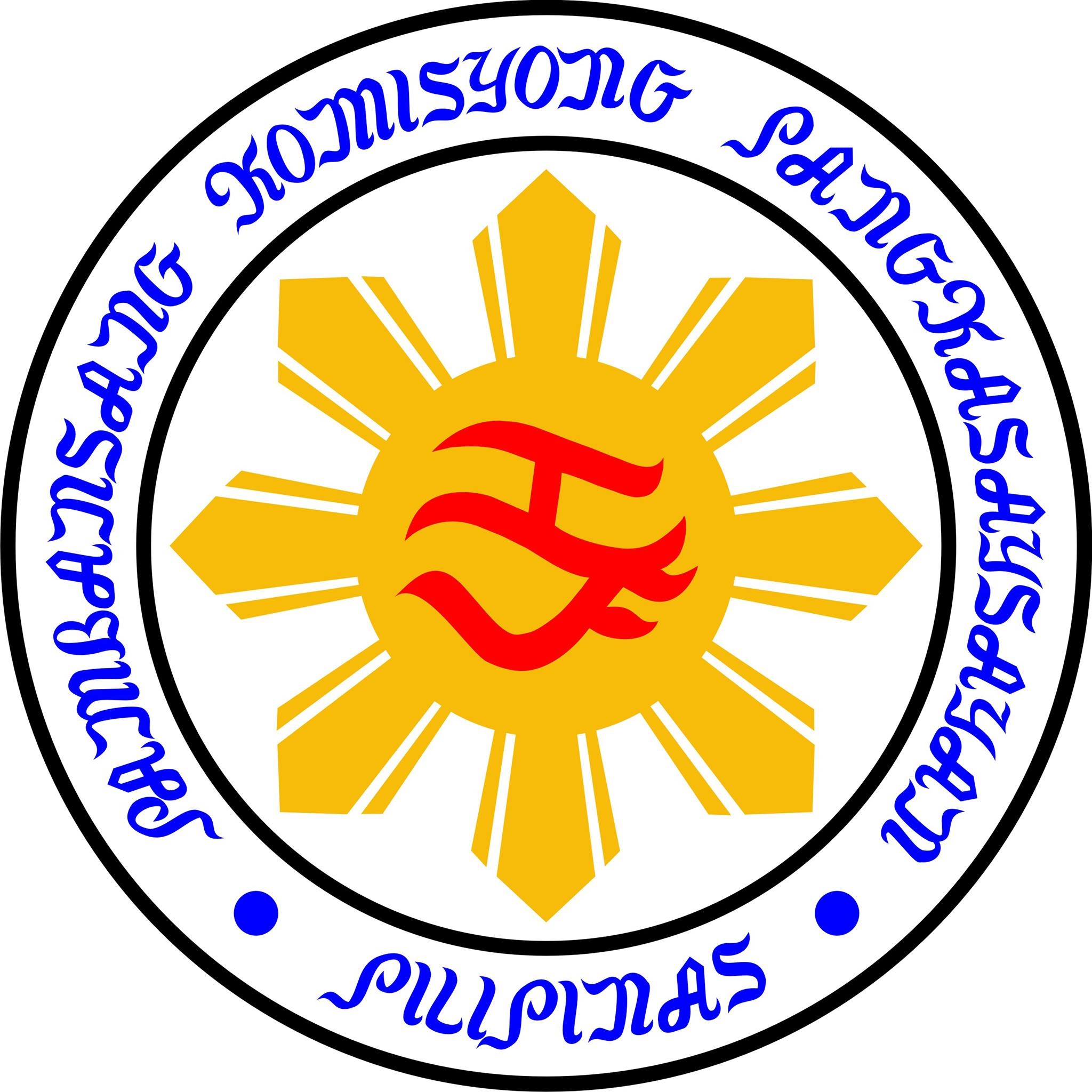
BASAY, Negros Oriental, Sept. 30 (PIA) -- The National Historical Commission of the Philippines (NHCP) unveiled a historical marker along the coast of Balatong Point, Brgy. Bongalonan in this municipality to honor a key moment in the province and in the nation’s history during World War II.
The USS Crevalle historical marker, which was formally opened to the public on Sept. 21, serves as a reminder that the said US submarine docked along the shores of the municipality on May 11, 1944.
NHCP OIC-Executive Director Carminda Arevalo led the unveiling rites together with NHCP Commissioner Earl Jude Cleope, Engr. Dax Baccay of the Basay Mayor’s, Councilor Mikle Vito Abing, and other local officials.
The submarine was earlier patrolling the seas of Borneo when it was directed to go to Basay for a secret mission.
Its arrival in the province led to important moments in the country’s history, namely: the rescue of 40 American soldiers, civilians, and missionaries who were trapped in Negros Island during the Japanese Occupation, and it picked up the Z Plan from the guerillas in Negros Oriental, which was a document that proved to be vital in liberating the Philippines from Japanese forces.
The Z Plan, also known as the Koga Papers, contained the Japanese defense plan for the isles in the Philippines that are still under their command.
It was named after Admiral Mineichi Koga, commander of the Imperial Japanese Combined Fleet in the Pacific Region.
Months before, Koga flew from Palau to Davao on a “Kawanishi HSK2” flying boat to establish a new base there.
He was accompanied by Admiral Shigeru Fukodome who was riding a separate flying boat.
However, they encountered a strong typhoon on their way to Davao.
Koga’s flying boat was believed to disappear following the incident while Fukodome’s flying boat floundered along the seas of Cebu and crashed along the coast of San Fernando, Naga, Cebu.
Cebuano guerillas who caught Fukodome and other survivors of the plane crash brought them to their headquarters near Mt. Manunggal.
Col. James Cushing, an American-civilian, was the commander of the Cebuano Guerillas that time.
On April 3, Cebuano fishermen Pedro Gantuangko and Rufu Wamar found the Z Plan in the debris of Admiral Fukodome’s flying boat that were floating along the coast of Perellos, Carcar.
The Z Plan was turned over to the guerillas in Cebu and was later on sent to guerillas in Negros Oriental and eventually given to the Americans aboard the USS Crevalle.
From Basay, the Z Plan was taken to Gen. Douglas MacArthur in his base in Australia.
After thorough study and translation, they were able to decipher the Z Plan and found out that the Japanese had a weak spot in Leyte.
MacArthur proceeded with the Leyte Landing and with the help of the Z Plan, the liberation forces were able to launch a counter attack against the Japanese forces and freed the Philippines from them.

Arevalo said that the unveiling of the marker is also a way of honoring those who were involved in this significant moment in the country’s history.
“Atin din binibigyang pugay ang mga opisyal at tripulante ng submarino, ang dalawang Filipinong mangingisda nakakuha ng dokumento, ang mga gerilya ng Cebu at Negros, at ang natatanging kahalagahan pambansa ng pangyayaring ito ng kasaysayan (We are paying tribute to the officials and crew of the submarine, the two Filipinos who discovered the document, the guerillas in Cebu and Negros, and the historical significance of this event to our country),” Arevalo said.
NHCP also turned over the management of the historical marker to the Basay municipal government through the signing of a memorandum.
Abing said he plans to file an ordinance declaring May 11 as a special day in the municipality to commemorate this historic event in Basay.
“We’re going to propose a legislation na amoa siyang i-set gud na date (of commemoration), along with the preservation and conservation ani nga marker (We’re going to propose a legislation to set the date of commemoration along with the preservation and conservation of this marker),” Abing said.
He also disclosed plans to develop the area into a park so people can visit the marker and see the beautiful shoreline of Basay.
Aside from this, he will also push for a local legislation to integrate this in the curriculum or school lessons so that the youth of Basay will be aware of the town’s contribution to the country’s history (RAL/PIA7-Negros Oriental)




